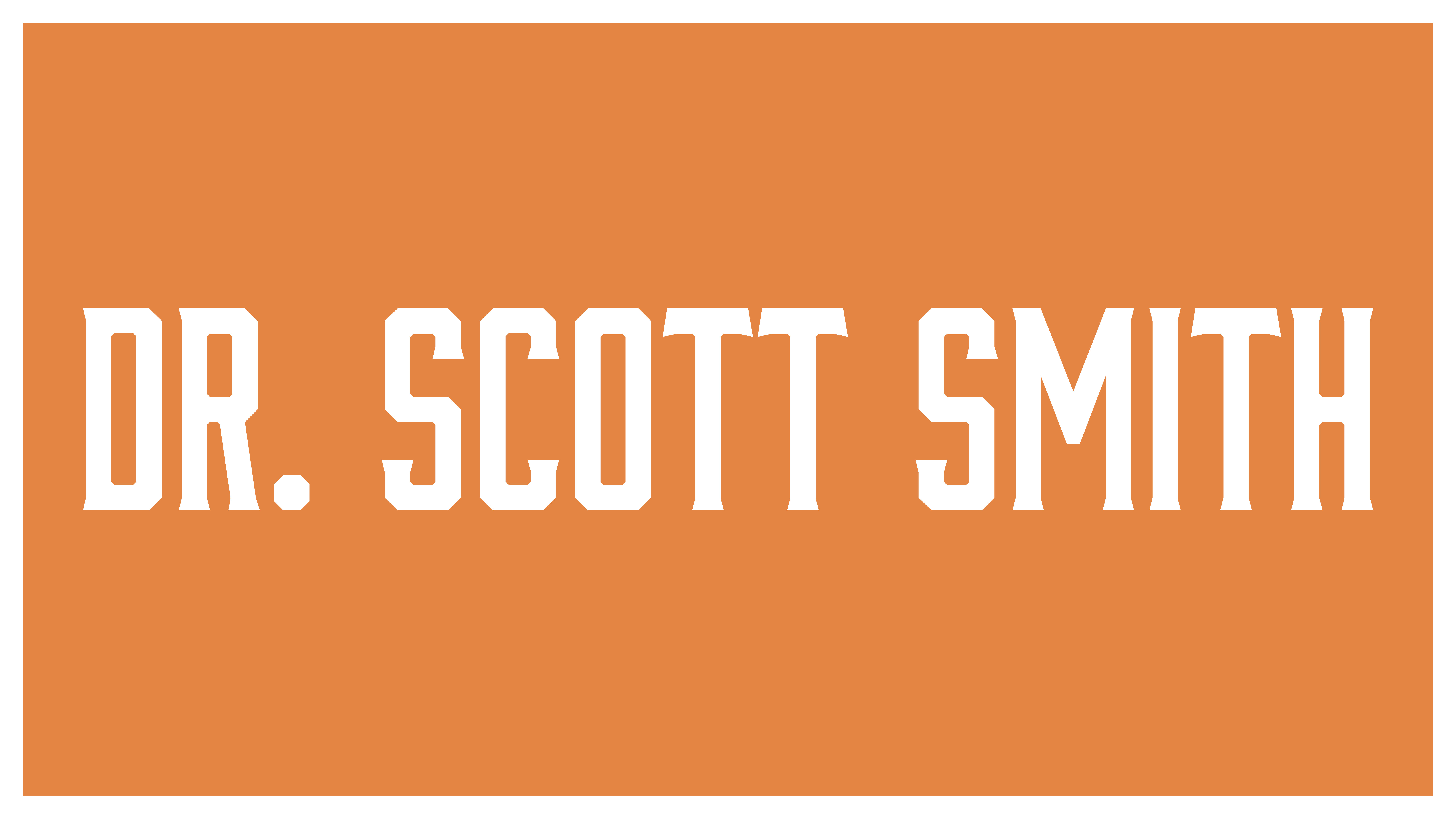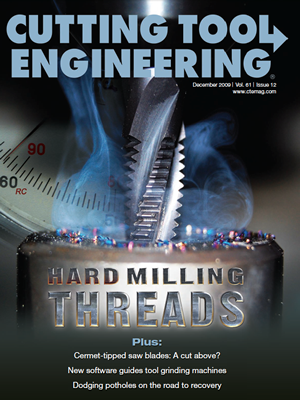In my October column, I pointed out that machine tools are poor substitutes for coordinate measuring machines partly because of their thermally induced errors. End users generally operate machine tools in poor thermal environments, and the machines have heat sources, such as from the cutting process, the spindle and the drives. Those heat sources change machine geometry.
At least three options exist for attempting to correct these thermal errors:
• “Brute-force” temperature control;
• Thermal modeling and temperature measurement; and
• Direct measurement of position errors.
The brute-force option requires removing the heat before it can change the geometry of the machine. Some of the techniques are surprisingly simple and inexpensive, such as controlling coolant temperature. Generally, machining centers have a large coolant sump that has a long thermal time constant. A coolant control system consists of a temperature sensor (a thermocouple, for example), a heat exchanger (using chilled water, for example) and a method to regulate the flow through the heat exchanger.
Holding the coolant temperature to within a couple of degrees is relatively easy. The spray of the coolant over the work zone, tool and workpiece helps keep temperatures more constant.
Air conditioning for the shop environment is an obvious option because the machine tool and workpiece expand and contract following changes in ambient temperature. While holding the ambient temperature constant is a clear benefit for accuracy, many machine shops are essentially uncontrolled. Why? One reason is the cost of air conditioning is explicit, but the cost of not air conditioning is hidden in the cost of out-of-tolerance parts, rework, scrap and the periodic NC programming tweaks required to keep parts in tolerance. Those programming changes are needed because the machine is not thermally stable, and therefore tweaked programs require further adjustments.
Some machine tool builders go to great lengths to control spindle temperature. Some spindle designs pass temperature-controlled coolant through the center of the spindle, which is then collected outside the bearings. An external chiller holds the coolant temperature constant. In an extreme case of brute-force control, the entire structure of a special-purpose machine built for turning large optics is showered in temperature-controlled oil.
In the thermal-model-and-temperature-measurement strategy, a mathematical model of the machine’s thermal behavior is created. Using the model in steady-state conditions, the measurement of the temperature in a few critical locations on the machine is enough to predict positional errors caused by the temperature change. Measuring temperatures in critical locations is relatively easy, requiring the installation and monitoring of a few thermocouples.
Unfortunately, this strategy has a practical problem because the time constants of the thermal modes are on the order of hours, while the heat sources are often changing. The spindle is turned on and off and cutting starts and stops on much shorter time scales. Production machines never reach a thermal steady-state.
Correcting for thermal errors dynamically, using the mathematical model, requires not just knowing the temperature now, but also keeping track of the machine’s temperature history. There are laboratory examples of steady-state, model-based thermal control systems, but there are no examples of dynamic, model-based thermal control systems.
The third option for managing thermal errors of machine tools is to directly measure the position errors that result from poor temperature control, and to measure them unobtrusively in a short enough time to allow for real-time correction. One option is to use fiducials. In this concept, the workpiece is fitted with markers, such as tooling balls, holes or even printed marks. The positions of the markers are measured and recorded at a time when the workpiece temperature is well known. Later, in the shop environment, the positions of subsets of those markers are measured in the then-current thermal state of the machine and workpiece.
Errors in marker positions seen in such measurements reflect the machine’s thermal errors. Even without an explicit model of the machine, the measurement of a few markers is enough to allow correction of the part program. Transformation of the part program into the new machine geometry corrects for the thermal errors in near-real time (minutes).
Eventually, it may be possible for a new generation of laser tracking devices to measure real-time errors. These devices measure length changes like traditional laser interferometers, but they can track a target on the machine. Knowing the difference between the target’s intended position and its measured position allows for error correction. CTE
About the Author: Dr. Scott Smith is a professor at the William States Lee College of Engineering, University of North Carolina at Charlotte, specializing in machine tool structural dynamics. Contact him via e-mail at [email protected].
Related Glossary Terms
- centers
centers
Cone-shaped pins that support a workpiece by one or two ends during machining. The centers fit into holes drilled in the workpiece ends. Centers that turn with the workpiece are called “live” centers; those that do not are called “dead” centers.
- coolant
coolant
Fluid that reduces temperature buildup at the tool/workpiece interface during machining. Normally takes the form of a liquid such as soluble or chemical mixtures (semisynthetic, synthetic) but can be pressurized air or other gas. Because of water’s ability to absorb great quantities of heat, it is widely used as a coolant and vehicle for various cutting compounds, with the water-to-compound ratio varying with the machining task. See cutting fluid; semisynthetic cutting fluid; soluble-oil cutting fluid; synthetic cutting fluid.
- numerical control ( NC)
numerical control ( NC)
Any controlled equipment that allows an operator to program its movement by entering a series of coded numbers and symbols. See CNC, computer numerical control; DNC, direct numerical control.
- tolerance
tolerance
Minimum and maximum amount a workpiece dimension is allowed to vary from a set standard and still be acceptable.
- turning
turning
Workpiece is held in a chuck, mounted on a face plate or secured between centers and rotated while a cutting tool, normally a single-point tool, is fed into it along its periphery or across its end or face. Takes the form of straight turning (cutting along the periphery of the workpiece); taper turning (creating a taper); step turning (turning different-size diameters on the same work); chamfering (beveling an edge or shoulder); facing (cutting on an end); turning threads (usually external but can be internal); roughing (high-volume metal removal); and finishing (final light cuts). Performed on lathes, turning centers, chucking machines, automatic screw machines and similar machines.


